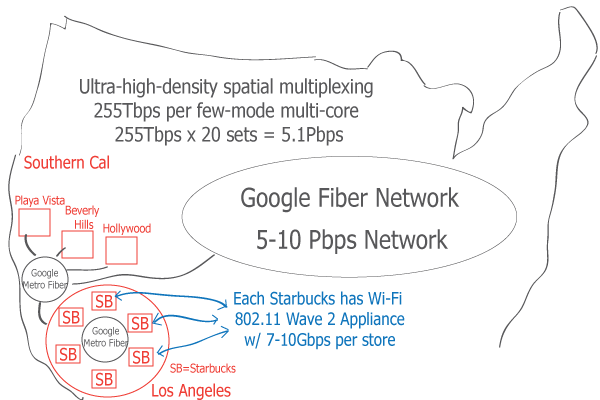Is it possible that IP transit price might drop to near zero, just like the way it is in the cloud compute space? A few days ago the thought of this would be “impossible”, but Google’s recent actions have turned that assumption upside down. Significant innovation is occurring in the areas of compute, storage, WAN, LAN and data center, however, last mile bandwidth to the consumer (homes, Starbucks, etc.) remains a bottleneck. The worse part, it is stifling innovation to the types of applications that can be developed for consumers. What happens if every home could support 25Gbps? It would usher a whole new era in consumers application development, just think gaming, virtual reality, high-res streaming, medical imaging, etc.
It’s premature to say that much bandwidth is not needed, because if the bandwidth is there, high bandwidth consumer applications are likely to follow. If Google enters the retail space, via a partnership or acquisition of a large chain that has thousands of locations throughout the US, that’s a game changer. It will be able to place next-gen Wi-Fi appliances (7-10Gbps) at each location, and connect each location to its Fiber Network. That would push AT&T, Verizon, and Comcast to match Google’s efforts, which in turn might lead to Internet 2.0 or 3.0. Of course we’re only looking at it from a technical perspective, not regulatory.
Last year, a team from the Eindhoven University of Technology (Netherlands) created an “Ultra-high-density spatial division multiplexing with a few-mode multi-core fiber” that enables 255Tbps over fiber, via division multiplexing techniques. If we add 255Tbps technology + 802.11 Wave 2 Wi-Fi, sky’s the limit, and the fuel that might ignite a significant drop n IP transit prices.

